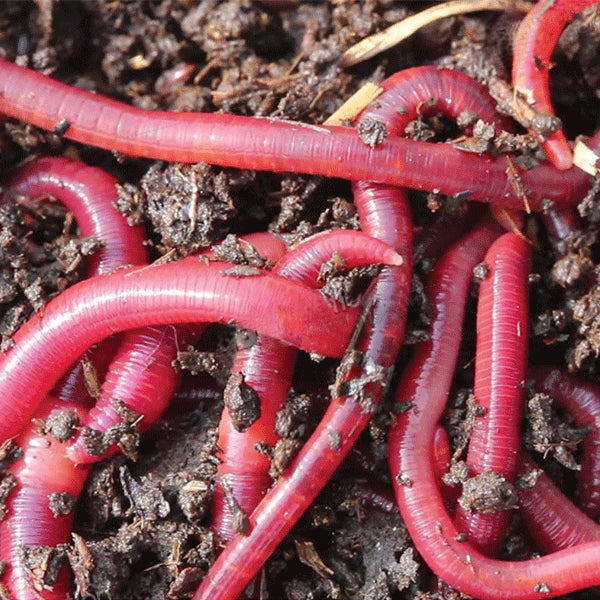Red worms: How to raise them properly
Red worms: How to raise them properly
Blog Article
Why Red Wigglers Are the most effective Option for Your Composting Requirements
Red wigglers have emerged as an exceptional choice for composting due to their remarkable ability to effectively decay natural matter while generating premium worm spreadings. The trip to effective vermicomposting includes more than merely getting these worms, and understanding the ideal problems and false impressions bordering them is important for optimizing their possibility.
Benefits of Red Wigglers

Red wigglers thrive in a range of conditions, making them adaptable to different composting setups, from small bins to bigger systems. They succeed in vermicomposting, where their activity develops a high-grade end product called worm spreadings, abundant in valuable microorganisms and nutrients important for plant development. This all-natural fertilizer promotes dirt health, improves wetness retention, and improves plant strength versus insects and conditions.
Additionally, using red wigglers can substantially decrease methane exhausts connected with land fill waste, adding to environmental sustainability. Their convenience of treatment and minimal maintenance needs make them suitable for both beginner and experienced composters. Ultimately, incorporating red wigglers right into your composting strategy not only cultivates effective waste management but also elevates the top quality of your garden compost.
Ideal Composting Conditions
Creating optimal composting conditions is important for taking full advantage of the efficiency of red wigglers in damaging down raw material. These worms thrive in a regulated atmosphere that resembles their natural environment, which largely is composed of damp, dark, and well-aerated rooms. To attain this, preserving a temperature level variety of 55 ° F to 77 ° F is important, as extreme temperatures can inhibit their activity and even cause mortality.
(red wiggler earthworms for sale)Dampness levels need to additionally be very carefully monitored; red wigglers call for a damp atmosphere, ideally around 70% wetness content. Way too much dampness can lead to anaerobic conditions, while inadequate wetness can cause dehydration. In addition, a well balanced carbon-to-nitrogen proportion, ideally around 25:1 to 30:1, supports optimal food digestion and nutrient cycling.
Furthermore, the composting medium must be maintained loose and oxygenated, enabling for proper air movement. This not just benefits the worms but also help in the break down of organic products. By making certain these excellent conditions, composters can develop a successful community that enhances the efficiency of red wigglers, inevitably resulting in abundant, nutrient-dense compost.
Just How to Begin Vermicomposting
Starting vermicomposting is an uncomplicated process that can generate significant benefits for both your yard and the atmosphere. To begin, choose an ideal container, such as a plastic bin or a wood box, ensuring it has ventilation holes for air movement. A size of around 15 to 20 gallons is ideal for small-scale operations.
Following, prepare the bedding product, which ought to be a mixture of shredded newspaper, cardboard, and coconut coir. This bed linen gives a comfortable habitat for the worms while preserving wetness. Goal for a bedding depth of about 4 to 6 inches.
When the bed linens is prepared, introduce red wigglers right into the container. A populace of about 1,000 worms is enough for processing cooking area scraps successfully. After including the worms, incorporate a well balanced mix of eco-friendly products, such as vegetables and fruit scraps, along with brown materials, like dried out leaves.

Nutrient-Rich Castings
(buy red wiggler worms)The red wigglers in your vermicomposting system play an essential directory role in creating nutrient-rich castings, an extremely in-demand natural plant food. These spreadings, usually referred to as worm humus, are the result of the worms digesting raw material and excreting it in a kind that is unbelievably advantageous for plants.
Rich in vital nutrients such as nitrogen, phosphorus, and potassium, worm castings supply a balanced resource of fertility that improves soil structure and promotes healthy plant development. Furthermore, they include helpful microbes that additionally improve dirt wellness, assisting in nutrient absorption and illness resistance.
The slow-release nature of worm spreadings makes certain that nutrients are readily available to plants over a prolonged duration, reducing the threat of nutrient leaching and hence adding to sustainable gardening methods. Unlike artificial plant foods, which can cause soil degradation over time, worm castings boost the dirt's physical, chemical, and biological buildings.
As a result, incorporating red wigglers into your composting efforts not just alleviates waste however also generates a costs natural change that substantially benefits yards, landscapes, and potted plants alike. - red wigglers
Common Misconceptions About Worms
While several people recognize the advantages of using worms in composting, numerous mistaken beliefs continue concerning their biology and habits. One usual myth is that all worms are equally effective for composting, when in fact, only certain types, like red wigglers, thrive in natural waste environments. These worms are especially adjusted to composting, making them excellent for this function.
An additional false impression is that worms are delicate and need excessively details conditions to endure. In reality, red wigglers are rather resistant, able to endure a range of temperature levels and moisture levels, supplied they are maintained within an ideal variety.
In addition, some believe that worms take in all kinds of food waste indiscriminately. Red wigglers like specific natural products, such as fruit and veggie scraps, and can struggle with meat, dairy products, and oily foods, which can develop odors and attract bugs.
Conclusion
Finally, red wigglers represent an ideal selection for composting as a result of their rapid decay capacities and adaptability to various atmospheres. The nutrient-rich castings created dramatically boost soil health and wellness, advertising lasting horticulture techniques. Recognizing the ideal conditions for vermicomposting and attending to typical false impressions concerning these worms further strengthens their duty in efficient waste management. red wigglers. By leveraging the advantages of red wigglers, individuals and communities can contribute to an extra lasting and eco pleasant strategy to natural garbage disposal.
Report this page